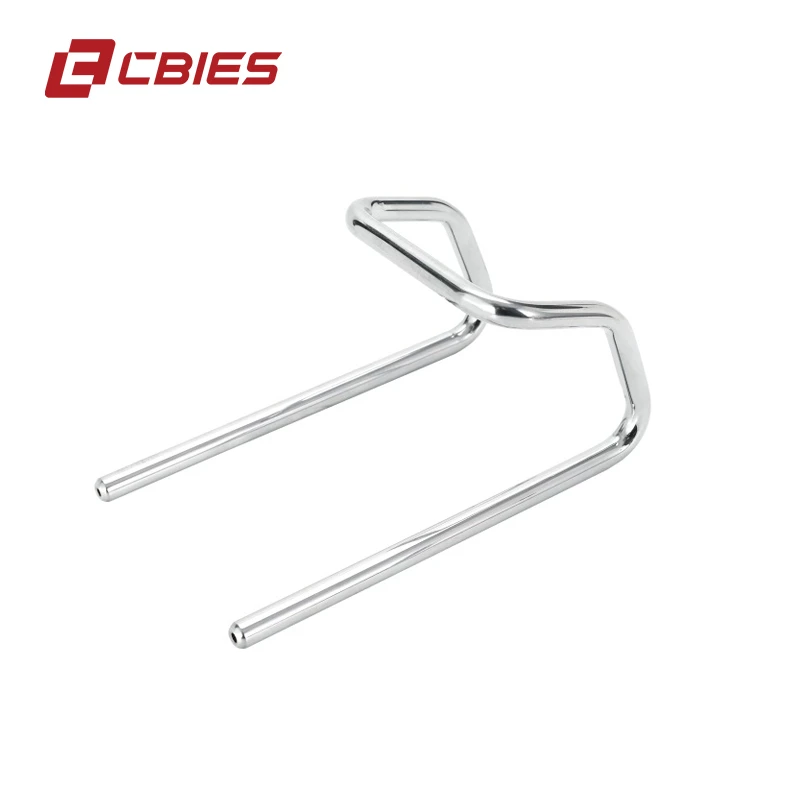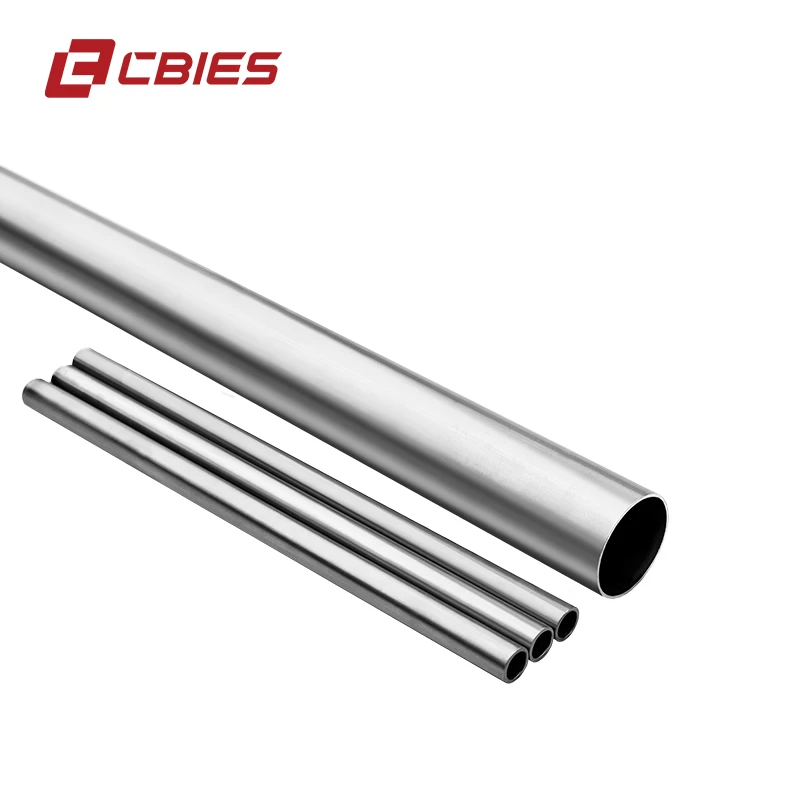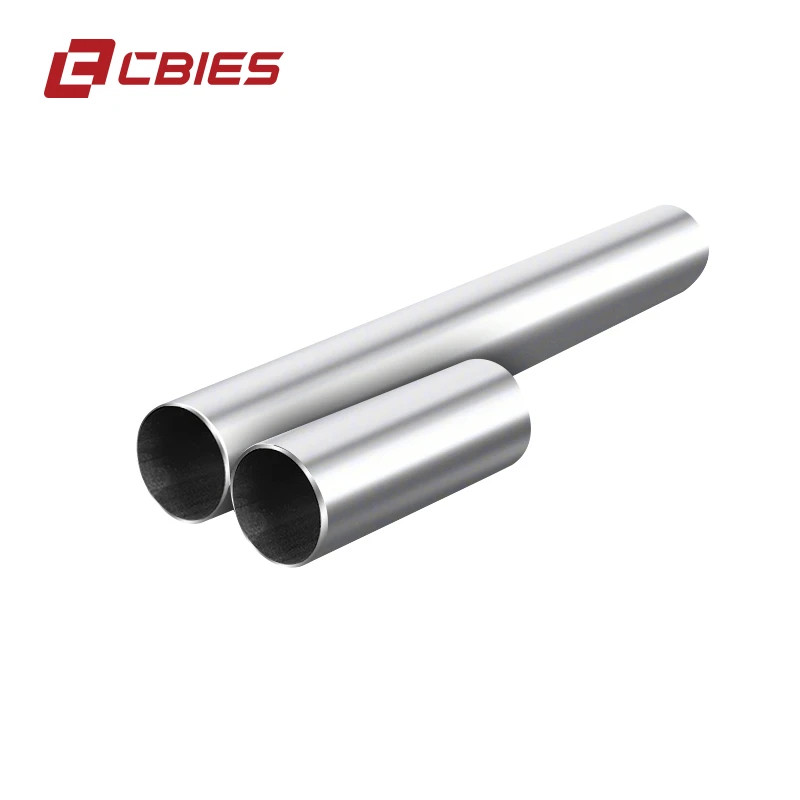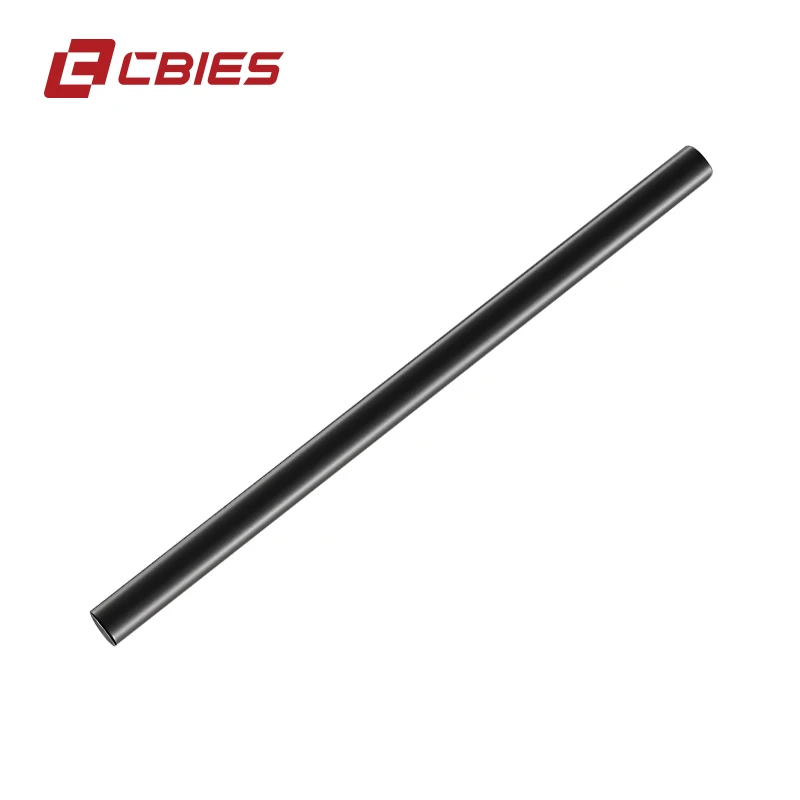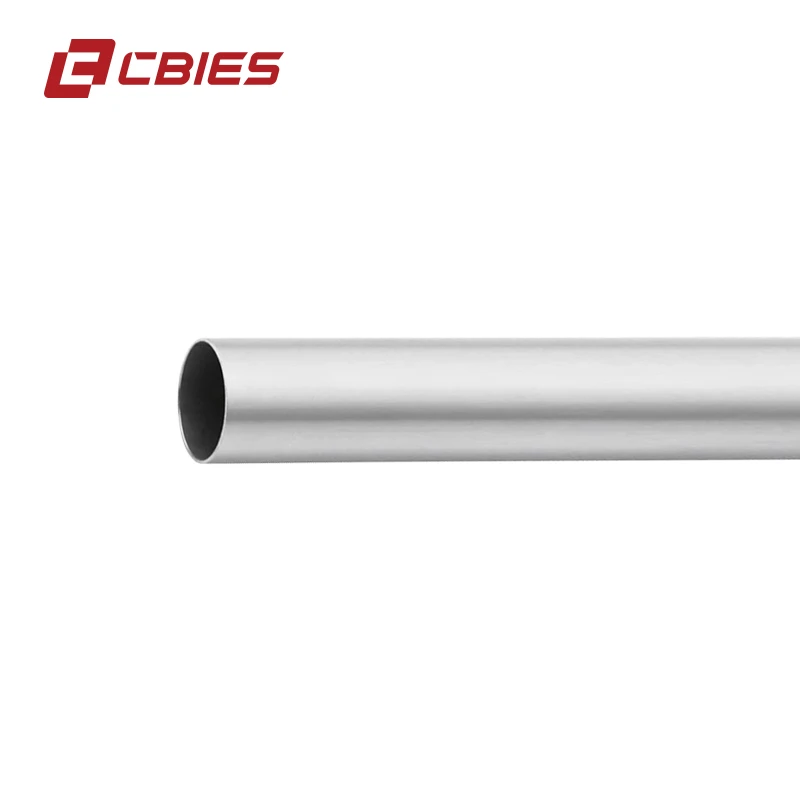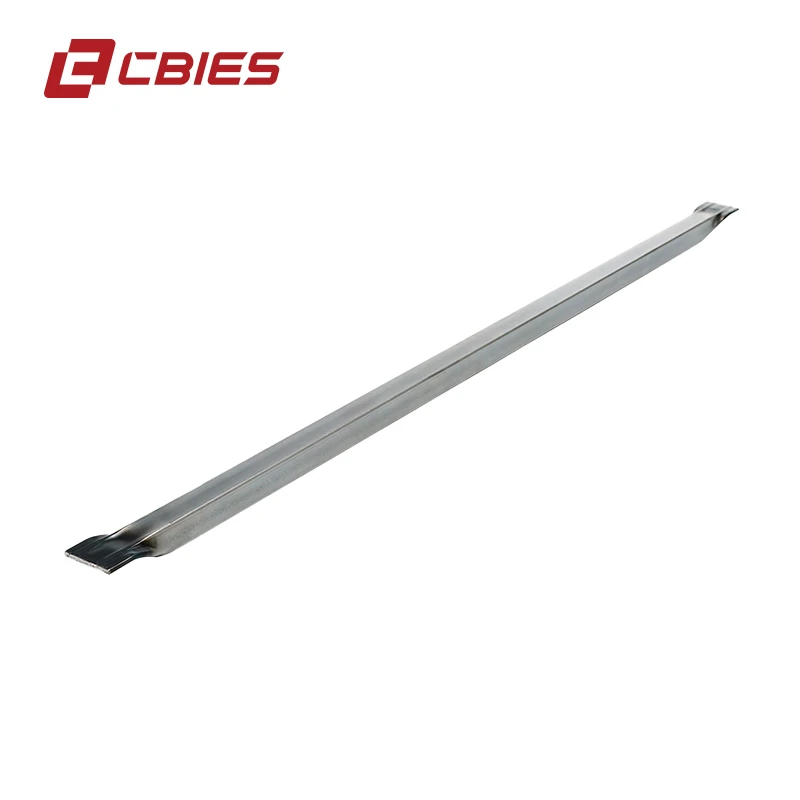The Foundational Role of Advanced Steel Tubes in Automotive Seating
In the rapidly evolving automotive industry, where safety, comfort, and lightweighting are paramount, the structural integrity of every component is meticulously scrutinized. Central to the design and performance of modern vehicle interiors, especially seating systems, is the Car Back Support Steel Tube. This seemingly simple component is, in fact, a product of sophisticated metallurgical science and precision engineering, forming the essential skeleton that provides anatomical support, crash protection, and durability for occupants. The industry trend towards electric vehicles (EVs) and autonomous driving further amplifies the need for innovative materials and designs, as lightweighting directly translates to extended range and enhanced energy efficiency, while occupant safety remains non-negotiable in diverse crash scenarios. Moreover, the increasing demand for customizable and ergonomically superior seating solutions in luxury and mass-market vehicles alike necessitates a foundational component that can be reliably formed into complex geometries without compromising on strength or structural integrity. Manufacturers of advanced automotive components understand that the quality of the primary materials dictates the performance of the final assembly. Therefore, the selection of steel, its specific grade, and the tube's manufacturing process are critical factors influencing the overall vehicle's safety ratings, passenger experience, and long-term reliability. This initial understanding sets the stage for a deeper dive into how specialized steel tubes are engineered to meet and exceed the stringent demands of global automotive standards, offering unparalleled advantages in contemporary vehicle design and production. The pursuit of superior occupant protection, combined with the drive for fuel efficiency and reduced emissions in internal combustion engine (ICE) vehicles and extended range in EVs, underscores the continuous innovation in materials science and manufacturing processes applied to products like the Car Back Support Steel Tube, making it a cornerstone of modern automotive engineering. The functional demands placed upon these tubes are multifaceted, encompassing not only static load-bearing capabilities but also dynamic response under sudden impact, resistance to fatigue from continuous usage, and the ability to integrate seamlessly with other complex seat mechanisms such as recliners, lumbar supports, and heating/cooling elements. This necessitates a deep understanding of material properties, precision forming techniques, and stringent quality control protocols throughout the entire production lifecycle, ensuring that each tube contributes effectively to a holistic and high-performance seating system. The global automotive market, characterized by intense competition and rigorous regulatory frameworks, compels manufacturers to seek out suppliers who can deliver components that offer a superior balance of performance, cost-efficiency, and consistency, solidifying the critical role played by the specialized steel tube in shaping the future of vehicle interiors.
Precision Engineering: The Manufacturing Journey of Car Back Support Steel Tube
The production of a high-quality Car Back Support Steel Tube is a multi-stage, highly controlled process that begins with the meticulous selection of raw materials. Typically, various grades of carbon steel, alloy steel, or high-strength low-alloy (HSLA) steel are chosen based on the specific strength, ductility, and fatigue resistance requirements mandated by automotive OEMs. Common grades might include SPCC, SPHC, or advanced high-strength steels (AHSS) like DP (Dual Phase) or TRIP (Transformation Induced Plasticity) steels, each offering distinct advantages in terms of formability and post-deformation strength. The manufacturing journey commences with raw material inspection, where incoming coils or sheets undergo rigorous chemical composition analysis and mechanical testing to ensure compliance with stringent specifications. Following this, the steel is typically formed into tubes through either seamless or welded processes. Seamless tubes, formed by piercing a solid billet and then drawing or rolling it, offer superior concentricity and uniform wall thickness, often preferred for high-stress applications. Welded tubes, created by continuously forming a steel strip into a tubular shape and then welding the seam (e.g., Electric Resistance Welding - ERW, or Laser Welding), offer cost-effectiveness and excellent dimensional control, with advancements making welded seams nearly as strong as the parent material. After forming, the tubes undergo precision cutting to the required lengths, often utilizing laser cutting or cold saw cutting for clean, burr-free edges, crucial for subsequent bending and assembly. The critical next phase involves sophisticated bending and forming operations, such as rotary draw bending, roll bending, or hydroforming. Hydroforming, a particularly advanced technique, uses high-pressure fluid to shape the tube within a die, allowing for the creation of complex, hollow shapes with exceptional precision and uniform wall thickness, optimizing weight without sacrificing strength. This process is instrumental in achieving the ergonomic and safety-critical geometries required for back support structures. If the design necessitates multi-piece assembly, advanced welding techniques like robotic MIG/MAG or laser welding are employed to join components, ensuring robust and consistent connections. Post-forming, the tubes undergo various surface treatments to enhance corrosion resistance and improve aesthetic appeal, including galvanizing, electro-coating (E-coat), or powder coating, which also prepare the surface for integration into the larger seat assembly. Throughout every stage, rigorous quality control measures are implemented, adhering to international standards such as ISO 9001 and IATF 16949, which are specifically tailored for the automotive industry's quality management systems. These inspections include non-destructive testing (NDT) methods like ultrasonic testing for internal flaws, eddy current testing for surface defects, and visual inspections, alongside destructive tests such as tensile testing, yield strength testing, hardness testing, and crush/burst testing to verify mechanical properties and structural integrity. The use of Coordinate Measuring Machines (CMM) ensures dimensional accuracy and adherence to tight tolerances, guaranteeing precise fit and function within complex seat assemblies. This comprehensive approach to manufacturing ensures that each Car Back Support Steel Tube not only meets but often exceeds industry benchmarks for durability, safety, and performance, delivering components that are reliable and contribute directly to the overall quality and safety of automotive seating systems. The longevity of these components, often designed to last the lifetime of the vehicle, is a testament to the robust manufacturing processes and the quality of materials selected, underscoring the vital contribution of specialized tube manufacturers to the global automotive supply chain. The ability to produce tubes with consistent mechanical properties and dimensional precision across large volumes is a hallmark of an expert manufacturer, providing OEMs with the confidence needed for high-volume vehicle production.
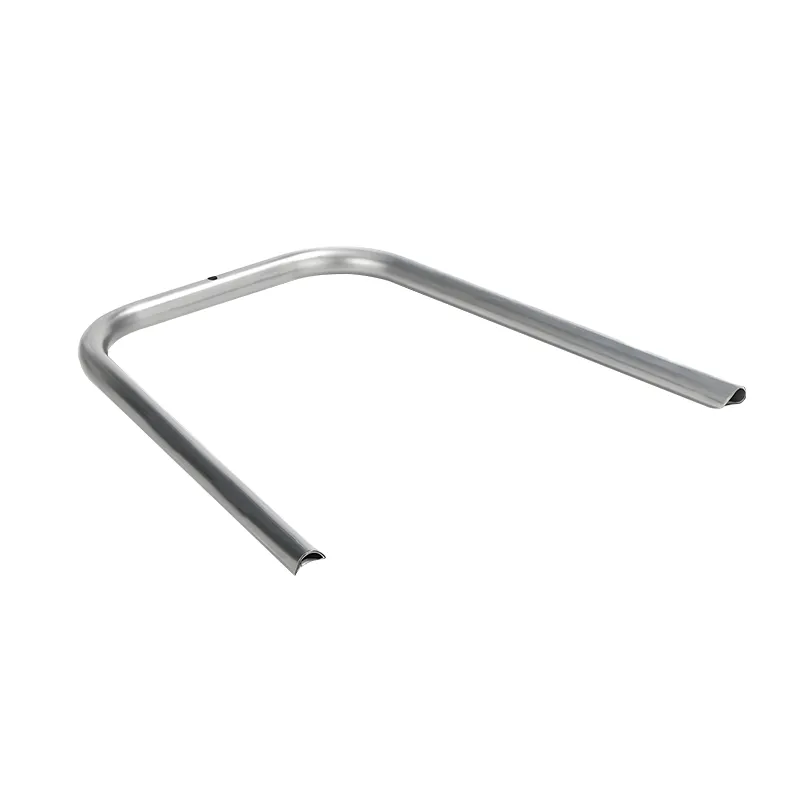
Critical Parameters: Understanding Car Back Support Steel Tube Specifications
The performance of a Car Back Support Steel Tube is fundamentally defined by a precise set of technical parameters and specifications, which are meticulously controlled throughout the manufacturing process to meet the exacting requirements of automotive applications. Material grade is paramount, with common choices including various low-carbon steels like SPCC (cold-rolled commercial quality), SPHC (hot-rolled commercial quality), or higher-strength alternatives such as DP (Dual Phase) or TRIP (Transformation Induced Plasticity) steels, offering yield strengths ranging from 200 MPa up to 1000 MPa or more for specialized applications. The selection directly impacts the tube's ability to absorb energy during impact, resist deformation under static loads, and maintain structural integrity over the vehicle's lifespan. Dimensional specifications are equally critical, encompassing the Outer Diameter (OD), Wall Thickness (WT), and overall length, all subject to extremely tight tolerances, often measured in hundredths of a millimeter, to ensure perfect fit and assembly into complex seat frames. Typical ODs might range from 15mm to 35mm, with wall thicknesses from 1.0mm to 2.5mm, depending on the application's specific load-bearing requirements and weight targets. Mechanical properties are quantified through rigorous testing: Tensile Strength (the maximum stress the material can withstand before breaking), Yield Strength (the stress at which permanent deformation occurs), Elongation (a measure of ductility), and Hardness (resistance to indentation, often measured in Rockwell B or C scales). For instance, a tube might be specified with a minimum tensile strength of 450 MPa and a minimum yield strength of 320 MPa, alongside an elongation of at least 25% to ensure adequate formability and crash energy absorption. The surface finish is also a key parameter, with requirements for smoothness, uniformity, and readiness for subsequent coating or welding processes. Internal and external burr control is crucial, especially for tubes integrated with other moving parts, to prevent abrasion or interference. Straightness and concentricity are vital for consistent bending and assembly performance, often specified with maximum deviation over a given length. Finally, specialized requirements such as crush resistance, fatigue life (the number of cycles a material can withstand before failure under fluctuating loads), and corrosion resistance (enhanced by specific coatings or material choices) are often defined to guarantee long-term performance and safety in diverse environmental conditions. These parameters, when combined, define the precise capabilities of each Car Back Support Steel Tube, enabling engineers to design seating systems that balance occupant comfort, safety, and lightweighting objectives.
Typical Car Back Support Steel Tube Specifications
| Parameter |
Typical Range / Value |
Standard (Example) |
| Material Grade |
SPCC, SPHC, DP600, TRIP780 (HSLA) |
JIS G 3141, ASTM A1011, SAE J2340 |
| Outer Diameter (OD) |
15 mm - 35 mm (±0.05 mm tolerance) |
EN 10305, ASTM A513 |
| Wall Thickness (WT) |
1.0 mm - 2.5 mm (±0.03 mm tolerance) |
EN 10305, ASTM A513 |
| Tensile Strength (UTS) |
350 MPa - 780 MPa (min) |
ASTM E8, ISO 6892-1 |
| Yield Strength (YS) |
220 MPa - 650 MPa (min) |
ASTM E8, ISO 6892-1 |
| Elongation |
20% - 40% (min) |
ASTM E8, ISO 6892-1 |
| Hardness |
HRB 60 - HRB 95 (approx.) |
ASTM E18, ISO 6508 |
| Surface Finish |
Clean, smooth, ready for coating/welding, controlled burr |
Visual Inspection, OEM Specific |
| Straightness |
Max 1.0 mm/meter deviation |
OEM Specific |
| Corrosion Resistance |
Based on coating (e.g., Salt Spray Test: 240-500 hours) |
ASTM B117, ISO 9227 |
Ubiquitous Applications and Industry Resonance of Car Back Support Steel Tube
The application scenarios for the Car Back Support Steel Tube are deeply embedded within the automotive sector, defining the safety, ergonomics, and structural integrity of vehicle seating across a broad spectrum of car types. In passenger vehicles, from compact sedans to luxury SUVs, these tubes form the unseen yet critical framework of seatbacks, providing robust support for occupant posture and vital protection during collisions. They are the backbone of primary seat frames, where they are meticulously integrated to support not just the occupant's weight but also to house complex mechanisms such as recliners, lumbar support systems, and integrated headrests. In commercial vehicles, including trucks and buses, where seating endures continuous heavy use and diverse occupant sizes, the demand for exceptionally durable and reliable steel tubes is even higher, directly contributing to driver comfort during long hauls and passenger safety in public transport. Beyond the primary structural function, these tubes are instrumental in enabling advanced seating features, contributing to improved ergonomics through precisely engineered curves and angles that conform to human anatomy, enhancing long-distance comfort and reducing driver fatigue. Their high strength-to-weight ratio allows for critical lightweighting initiatives in vehicle design, a paramount objective for improving fuel efficiency in internal combustion engine (ICE) vehicles and extending the range of electric vehicles (EVs) by reducing overall vehicle mass. The material and design precision of these tubes also play a pivotal role in crashworthiness, as they are engineered to absorb and dissipate kinetic energy during impacts, protecting occupants from severe injuries. This contribution to passive safety systems is rigorously tested against global standards like Euro NCAP, NHTSA, and IIHS, where seat and head restraint performance are key evaluation criteria. The precise bending and forming capabilities of advanced steel tubes allow for intricate designs that optimize space within the cabin, facilitating more complex seat designs with integrated electronics for heating, ventilation, and massage functions, all while maintaining the necessary structural rigidity. Furthermore, the inherent vibration dampening characteristics of steel, coupled with strategic design, contribute to a smoother ride experience by minimizing resonance from road imperfections. While primarily automotive, the expertise gained in manufacturing these sophisticated tubes also finds tangential applications in related industries requiring high-strength, precision-formed tubular structures, such as high-end office chairs, specialized medical seating, and certain types of precision furniture, where similar demands for durability, ergonomic support, and aesthetic integration are present. The continuous evolution of automotive design, driven by autonomous driving, shared mobility, and personalized interior experiences, will only further necessitate adaptable and high-performance Car Back Support Steel Tube solutions that can support multi-functional, reconfigurable, and safe seating environments of the future. The ability of these tubes to be precisely integrated into complex seat assemblies, often acting as conduits for wiring harnesses or pneumatic lines for active support systems, further underscores their versatility and indispensable role in contemporary vehicle manufacturing.
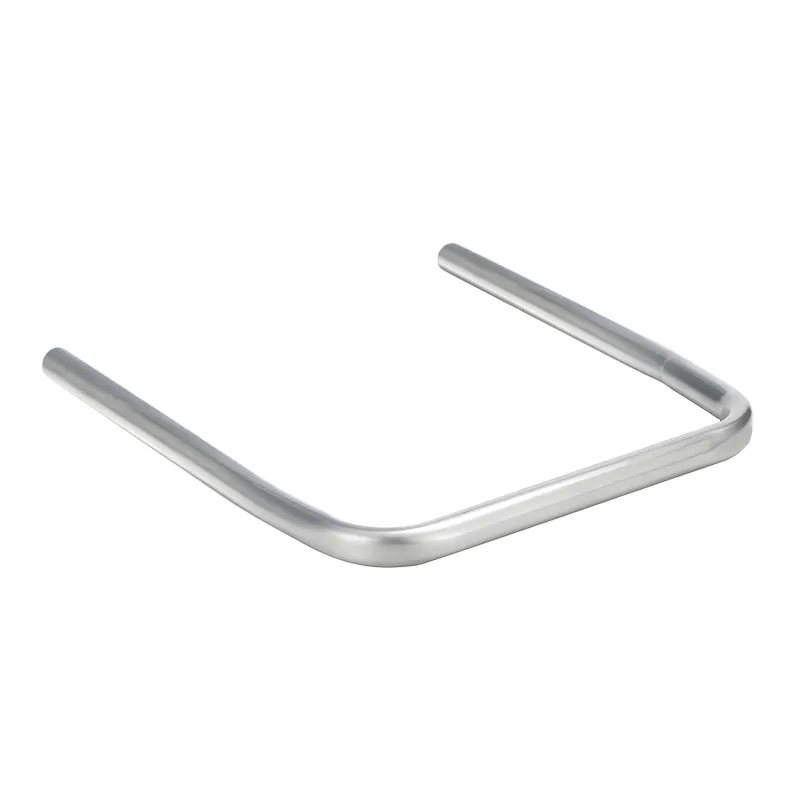
Unlocking Performance: Technical Advantages and Innovations in Steel Tube Technology
The technical advantages offered by advanced Car Back Support Steel Tube technology are multifaceted, directly contributing to enhanced safety, improved comfort, and greater manufacturing efficiency in the automotive sector. One of the primary benefits stems from precision engineering, particularly through techniques like CNC bending and laser cutting. CNC (Computer Numerical Control) bending machines allow for highly accurate and repeatable bends, even for complex multi-plane geometries, ensuring that each tube conforms perfectly to intricate seat frame designs. This precision minimizes assembly errors, reduces waste, and accelerates production cycles. Laser cutting offers unparalleled accuracy for profiling and cutting holes, enabling the integration of various components with minimal rework. Material science advancements have significantly transformed the capabilities of these tubes. The increasing adoption of High-Strength Low-Alloy (HSLA) steels and Advanced High-Strength Steels (AHSS) such as Dual-Phase (DP) and Transformation-Induced Plasticity (TRIP) steels has enabled the production of thinner-walled tubes that maintain, or even exceed, the strength of traditional thicker-walled components. This translates directly into substantial weight reduction without compromising structural integrity or safety, a critical factor for improving fuel economy and extending EV range. For instance, replacing conventional steel with AHSS can lead to a 20-30% weight reduction in seat structures while maintaining or improving crash performance. Corrosion resistance is another significant advantage, crucial for components operating in diverse environmental conditions throughout a vehicle's lifespan. Modern manufacturing employs various highly effective treatments, including galvanizing (zinc coating), electro-coating (e-coating), and powder coating, which provide robust barriers against rust and degradation, ensuring the long-term durability and safety of the seat structure. These coatings are often applied in highly controlled environments to ensure uniform coverage and superior adhesion. Fatigue resistance is a critical performance metric for a component subjected to constant dynamic loads from occupant movement and road vibrations. Specialized tube manufacturing processes, combined with appropriate material selection, enhance the fatigue life of the tubes, ensuring they maintain their structural integrity and support capabilities over hundreds of thousands of usage cycles. This reliability directly impacts vehicle longevity and passenger safety. Beyond these core attributes, innovations in tube forming, such as hydroforming, allow for the creation of complex cross-sections and varying wall thicknesses within a single tube. This optimizes material usage, distributing strength precisely where needed and further contributing to weight reduction while enhancing stiffness and crash performance. Cost-effectiveness is achieved through optimized manufacturing processes, reduced material waste, and the overall longevity of the product, leading to lower total cost of ownership for OEMs. Looking ahead, future trends in automotive seating point towards integrated designs that combine structural components with sensors, actuators, and smart materials for enhanced comfort, safety, and reconfigurability. The adaptability of high-performance steel tubes positions them perfectly to evolve with these demands, providing a robust and flexible foundation for next-generation seating solutions, potentially incorporating features like active ventilation pathways or structural elements that double as conduits for electrical wiring, further consolidating their indispensable role in automotive innovation.
Strategic Partnering: Selecting the Right Manufacturer for Car Back Support Steel Tube
Choosing the optimal manufacturer for Car Back Support Steel Tube components is a strategic decision that profoundly impacts an automotive OEM's product quality, production efficiency, and market competitiveness. The selection process should be guided by a comprehensive evaluation of several key criteria, extending far beyond mere price. Foremost among these is a manufacturer's adherence to and certification by relevant industry standards, particularly IATF 16949. This international standard, specific to the automotive industry's quality management systems, demonstrates a supplier's commitment to continuous improvement, defect prevention, and reduction of variation and waste in the supply chain, providing a robust framework for consistent quality delivery. ISO 9001 certification, while broader, is also a fundamental requirement. Beyond certifications, the manufacturer's R&D capabilities are critical. A forward-thinking supplier should possess the engineering expertise to collaborate on custom designs, provide insights into material selection, and offer innovative solutions for lightweighting or enhanced performance. This includes the ability to conduct advanced simulations (e.g., FEA - Finite Element Analysis) and rapid prototyping to validate designs before mass production. Production capacity and scalability are equally vital. OEMs require a partner who can consistently meet high-volume demands without compromising on quality or lead times. This necessitates modern manufacturing facilities equipped with automated bending, welding, and inspection technologies, capable of producing millions of units annually. A robust quality control system, encompassing in-line inspections, destructive and non-destructive testing (NDT), and comprehensive traceability, ensures that every Car Back Support Steel Tube meets the most stringent specifications. Suppliers should provide detailed quality reports, including material certificates, dimensional inspection reports, and performance test results. The range of customization options offered is another crucial differentiator. Automotive seating designs are becoming increasingly complex and unique to each vehicle model, requiring manufacturers to be highly adaptable in terms of tube dimensions, material grades, bending radii, and post-processing treatments (e.g., specialized coatings, pre-assembled sub-components). A strong supply chain management system and a proven track record of reliable delivery are indispensable to avoid production delays and maintain seamless assembly lines. This includes efficient logistics, inventory management, and contingency planning. Finally, a manufacturer's service years in the automotive industry and their established relationships with other Tier 1 or OEM clients serve as powerful indicators of their experience and reliability. A reputable supplier will have a deep understanding of automotive industry cycles, design methodologies, and strict regulatory compliance. Engaging in a comprehensive due diligence process, including factory audits, reviewing case studies, and requesting sample batches for internal testing, allows OEMs to make an informed decision and establish a long-term, mutually beneficial partnership that drives innovation and excellence in vehicle manufacturing.
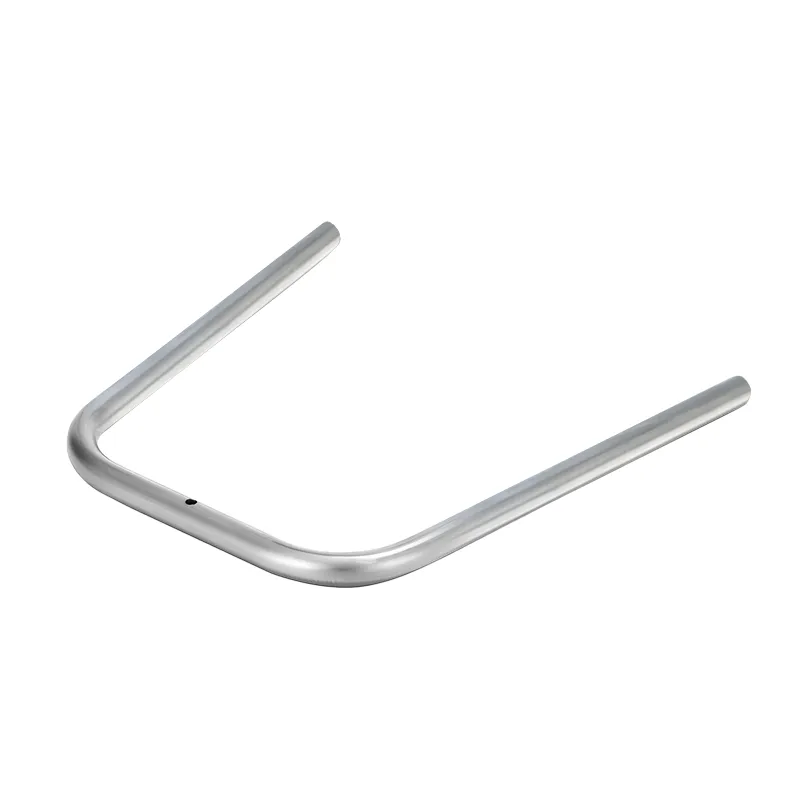
Tailored Excellence: Customization and Value Proposition for Car Back Support Steel Tube
In today's highly competitive automotive landscape, where differentiation and efficiency are key, the ability to offer comprehensive customization solutions for the Car Back Support Steel Tube translates directly into significant value for OEMs. A truly specialized manufacturer understands that "one size fits all" simply does not apply to the intricate demands of vehicle seating. Therefore, they offer a range of tailored services, beginning with collaborative design and engineering. This involves working closely with OEM R&D teams from the initial concept phase, providing expert input on material selection, optimal tube geometries, and manufacturing feasibility to ensure the design meets both functional performance and cost targets. This iterative design process, often supported by advanced CAD/CAM software and simulation tools, allows for rapid prototyping and testing of physical samples, validating design integrity and performance before committing to large-scale production. This upfront collaboration significantly reduces development cycles and potential costly re-designs later in the process. Material customization is a cornerstone of this value proposition, offering OEMs the flexibility to choose specific steel grades (e.g., HSLA, AHSS) with precise mechanical properties (tensile strength, yield strength, ductility) tailored to the unique crashworthiness, weight, and durability requirements of different vehicle platforms and market segments. For instance, a luxury vehicle might demand tubes with superior vibration dampening characteristics for enhanced comfort, while a sports car might prioritize ultimate strength-to-weight ratio for performance. Beyond raw material, post-processing customization adds substantial value. This includes a variety of surface treatments like specific types of galvanizing, e-coating, or powder coating, which can be applied to meet particular corrosion resistance standards or aesthetic requirements for integration into the seat assembly. Some manufacturers also offer pre-assembly services, where multiple tubes or additional components (e.g., brackets, fasteners) are welded or joined together into sub-assemblies before shipment. This can significantly reduce the OEM's assembly time and costs, streamlining their production line. Furthermore, comprehensive technical support from the manufacturer is invaluable, extending from initial design consultation through to delivery and after-sales service. This includes expert advice on logistics, packaging solutions to prevent damage during transit, and responsive troubleshooting. A deep commitment to quality assurance and continuous improvement means that the supplier isn't just delivering parts; they are delivering a reliable, high-performance solution that integrates seamlessly into the OEM's ecosystem. The true value lies not just in the physical component but in the long-term partnership, characterized by trust, flexibility, and a shared commitment to innovation. Such a partnership ensures that as automotive technologies evolve, the Car Back Support Steel Tube continues to meet and exceed future performance demands, contributing directly to product differentiation and enhanced consumer satisfaction. This holistic approach, combining expert design, material flexibility, advanced manufacturing, and dedicated support, establishes a manufacturer as an indispensable partner in the automotive supply chain.
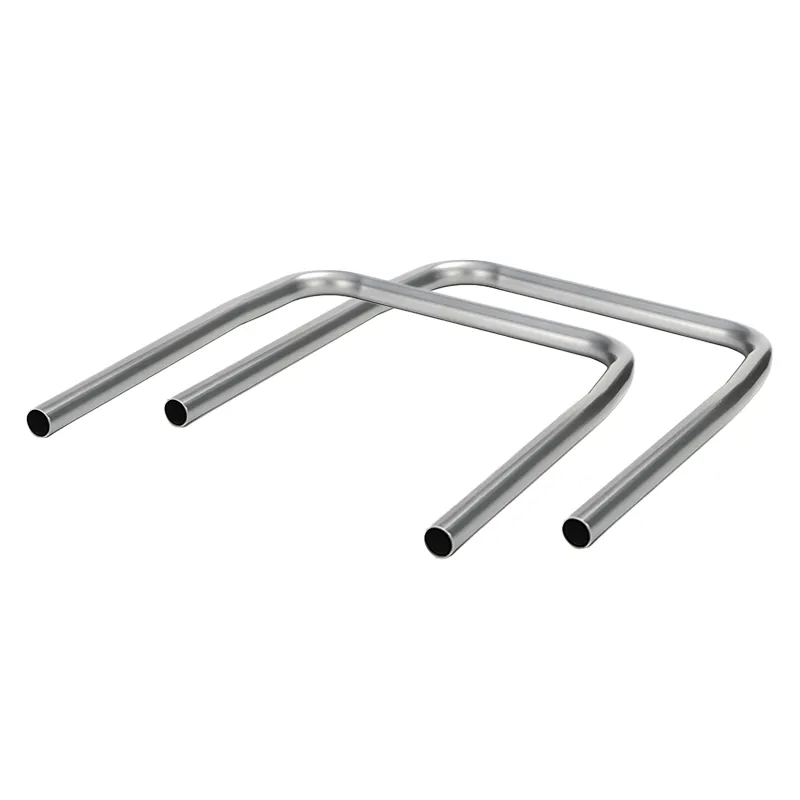
Driving Success: Illustrative Case Studies and Client Trust in Car Back Support Steel Tube
The tangible impact of a high-quality Car Back Support Steel Tube is best demonstrated through real-world application, showcasing how precision engineering and material science translate into quantifiable benefits for automotive OEMs and end-users. While specific client names remain confidential to protect proprietary information, a series of illustrative case studies can effectively highlight the value delivered. Consider a scenario involving a leading electric vehicle (EV) manufacturer aiming to achieve an ambitious weight reduction target for their new model to maximize battery range. By collaborating with a specialized steel tube supplier, the OEM was able to transition from traditional mild steel tubes to advanced high-strength steel (AHSS) variants for their seatback frames. Through optimized tube profiles and a combination of hydroforming and precision laser cutting, the supplier engineered a solution that reduced the weight of each seatback by approximately 1.5 kg without compromising static strength or crash performance. This seemingly modest reduction per seat, when multiplied across a vehicle with five seats and hundreds of thousands of units produced annually, translated into a significant overall vehicle weight saving, contributing to an estimated 3-5% increase in driving range and a substantial reduction in material consumption. This success was corroborated by extensive crash testing, where the redesigned seat structures consistently met or exceeded stringent global safety standards, reinforcing occupant protection in rear-end and side impacts. Another compelling case involves a premium sedan manufacturer facing challenges with seat frame integrity in high-mileage vehicles, particularly concerning fatigue resistance and long-term durability in varied climates. The original seat designs, utilizing standard steel tubing, exhibited premature fatigue cracks in accelerated aging tests, leading to potential warranty claims and reputational damage. By partnering with an expert in Car Back Support Steel Tube, the OEM implemented a solution using tubes with enhanced fatigue resistance through optimized material composition and a specialized cold-drawing process that improved grain structure and surface finish. The new tubes were also subjected to an advanced anti-corrosion e-coating, extending their lifespan in humid and salt-exposed environments. This proactive material and process upgrade resulted in a 40% improvement in fatigue life during laboratory simulations and eliminated observed failures in real-world fleet testing, leading to a projected 90% reduction in seat frame-related warranty claims over the vehicle's lifespan, significantly enhancing customer satisfaction and reinforcing the brand’s reputation for quality. A third example pertains to a commercial vehicle manufacturer seeking to improve ergonomic comfort for long-haul truck drivers. Traditional seat designs often led to driver fatigue due to inadequate lumbar support and vibration transmission. The chosen steel tube supplier collaborated to develop a unique, curvilinear Car Back Support Steel Tube through a multi-radius bending process, designed to provide more adaptive and comfortable lumbar support. This complex geometry required highly precise CNC bending capabilities. The new design not only enhanced driver comfort, leading to positive feedback in pilot programs and an internal metric indicating a 25% reduction in reported driver discomfort on extended trips, but also improved the structural stability of the integrated air suspension system within the seat, proving the supplier's ability to innovate beyond basic structural requirements. These diverse case studies underscore the critical importance of selecting a manufacturer with deep technical expertise, robust quality control, and a collaborative approach to problem-solving, turning complex engineering challenges into market-leading advantages and building profound client trust through consistent performance and measurable results.
Building Confidence: FAQ, Delivery, and Assurance for Car Back Support Steel Tube Procurement
Establishing strong client relationships in the B2B sector for components like the Car Back Support Steel Tube hinges on transparency, reliability, and robust support systems. Potential clients often have critical questions regarding product capabilities, logistics, and quality assurance. Addressing these proactively builds significant trustworthiness. Below is a Frequently Asked Questions (FAQ) section, followed by insights into delivery cycles and quality commitments, designed to provide comprehensive clarity and instill confidence.
Frequently Asked Questions (FAQ)
- What range of steel grades are available for Car Back Support Steel Tube?
We offer a comprehensive selection of steel grades, including standard carbon steels (e.g., SPCC, SPHC), various High-Strength Low-Alloy (HSLA) steels, and Advanced High-Strength Steels (AHSS) like Dual-Phase (DP) and Transformation-Induced Plasticity (TRIP) steels. Our metallurgical experts can advise on the optimal grade based on your specific application’s strength, ductility, weight reduction, and cost requirements.
- What are the typical lead times for custom Car Back Support Steel Tube orders?
Lead times vary depending on the complexity of the design, required material, order volume, and current production schedule. For standard orders, initial prototypes can typically be delivered within 4-6 weeks, with mass production commencing 8-12 weeks after final prototype approval. We work closely with clients to establish realistic timelines and, where possible, offer expedited options for urgent projects.
- How is quality ensured throughout the manufacturing process?
Our commitment to quality is underpinned by adherence to IATF 16949 and ISO 9001 certifications. We implement multi-stage quality control, including raw material inspection, in-process dimensional checks using advanced CMM (Coordinate Measuring Machines), and comprehensive final product testing (tensile strength, yield strength, hardness, fatigue testing, corrosion resistance). Each batch undergoes rigorous inspection, and full traceability is maintained from raw material to finished product.
- Can you handle complex geometries and tight tolerances?
Absolutely. Our state-of-the-art manufacturing facilities utilize advanced CNC bending, hydroforming, and laser cutting technologies, enabling us to produce tubes with highly complex, multi-plane geometries and extremely tight dimensional tolerances. We specialize in precision components that integrate seamlessly into sophisticated automotive seat assemblies.
- What are the minimum order quantities (MOQ)?
MOQs are determined by the specific product design and material, typically starting from a few thousand pieces for custom production. We understand the need for flexibility, especially during prototyping and initial production runs, and encourage direct discussion with our sales team to accommodate specific project needs.
- What is your warranty and after-sales support policy?
We stand behind the quality of our Car Back Support Steel Tube components with a comprehensive warranty against manufacturing defects, aligning with typical automotive industry standards. Our dedicated customer support team provides prompt assistance for any technical queries, performance evaluations, or logistical concerns that may arise after delivery, ensuring continued satisfaction and seamless integration into your production process.
Delivery Cycle Explanation
Our delivery cycle is meticulously managed to ensure timely and efficient supply to our clients. Once a purchase order is confirmed and technical specifications are finalized, the process initiates with raw material procurement and internal quality checks. Production planning then allocates resources, leading to the manufacturing stages (forming, cutting, bending, treatment, and welding). Throughout production, in-line quality control ensures adherence to specifications. Upon completion, products undergo final inspection and packaging tailored to prevent transit damage. Logistics are handled by experienced freight partners, offering various shipping options (sea, air, rail) to meet specific delivery deadlines and geographical requirements. Real-time tracking information is provided, ensuring transparency and predictability in the supply chain, from our facility to your assembly line.
Quality Assurance & Warranty Commitment
Our commitment to excellence extends beyond manufacturing. Each Car Back Support Steel Tube is a testament to our stringent quality assurance protocols, backed by a robust warranty. This warranty typically covers manufacturing defects for a specified period, ensuring the product's fitness for purpose under normal operating conditions. Our comprehensive testing capabilities, including fatigue life testing and accelerated corrosion testing, allow us to predict and guarantee the performance and longevity of our tubes, often designed to match or exceed the lifespan of the vehicle itself. We provide all necessary certifications and test reports, reinforcing our authority and transparency. Our after-sales support is designed to build lasting partnerships, providing technical assistance and problem-solving whenever needed, reflecting our dedication to client success and the continuous reliability of our products in the demanding automotive environment. This holistic approach to quality and support is what defines our trustworthiness in the market.
Conclusion: The Future of Automotive Seating Rests on Advanced Steel Tube Foundations
The journey through the intricate world of the Car Back Support Steel Tube reveals it to be far more than a simple metallic component; it is a meticulously engineered, high-performance product critical to modern automotive safety, comfort, and lightweighting initiatives. From the precision of material selection and advanced manufacturing processes like hydroforming and CNC bending, to the rigorous quality control and comprehensive testing against global automotive standards such as IATF 169949, every aspect of its production is geared towards delivering unparalleled reliability and performance. The strategic advantages offered by these advanced steel tubes – including superior strength-to-weight ratios, enhanced fatigue resistance, and customizable geometries – empower automotive OEMs to design vehicles that are not only safer and more fuel-efficient but also offer a significantly improved occupant experience. As the automotive industry continues its transformative shift towards electric vehicles, autonomous driving, and increasingly personalized cabin interiors, the demands on foundational components like the Car Back Support Steel Tube will only grow in complexity and importance. The future of automotive seating is poised for further innovation, with trends pointing towards modular designs, integrated smart technologies, and reconfigurable spaces. The adaptability and inherent strength of specialized steel tubes position them as indispensable building blocks for these next-generation seating solutions, capable of supporting integrated sensors, complex actuation mechanisms, and new ergonomic paradigms. Partnering with a manufacturer that possesses deep technical expertise, proven experience, unwavering authoritativeness through certifications, and transparent trustworthiness is paramount for OEMs seeking to maintain a competitive edge. This ensures access to cutting-edge material science, precision manufacturing capabilities, and dedicated technical support, all crucial for navigating the evolving landscape of automotive design and production. The ongoing research into new material alloys, advanced forming techniques, and sustainable manufacturing practices promises to further elevate the capabilities of these essential components, ensuring that the Car Back Support Steel Tube remains at the forefront of innovation, literally underpinning the comfort and safety of millions of journeys worldwide. Ultimately, the continuous evolution and refinement of these vital structural elements will play a pivotal role in shaping the future of vehicle interiors, making every ride safer, more comfortable, and increasingly personalized for the global consumer.
References and Further Reading
- Automotive Industry Standards (IATF 16949, ISO 9001): Learn more about quality management in automotive production. https://www.iatfglobaloversight.org/
- Advanced High-Strength Steels (AHSS) for Automotive Applications: Information on next-generation steel in vehicle lightweighting. https://www.worldautosteel.org/
- Developments in Automotive Seating Systems: A review of trends and technologies in automotive seating. (Access via academic search engines for journal articles on "automotive seating innovation" or "vehicle interior design"). Example resource: https://www.sae.org/publications/journals/automotive-engineering
- The Future of Automotive Interiors and Lightweighting: Perspectives from industry experts. (General industry publications, e.g., Automotive IQ, WardsAuto). Example resource: https://www.wardsauto.com/
 Afrikaans
Afrikaans  Albanian
Albanian  Amharic
Amharic  Arabic
Arabic  Armenian
Armenian  Azerbaijani
Azerbaijani  Basque
Basque  Belarusian
Belarusian  Bengali
Bengali  Bosnian
Bosnian  Bulgarian
Bulgarian  Catalan
Catalan  Cebuano
Cebuano  Corsican
Corsican  Croatian
Croatian  Czech
Czech  Danish
Danish  Dutch
Dutch  English
English  Esperanto
Esperanto  Estonian
Estonian  Finnish
Finnish  French
French  Frisian
Frisian  Galician
Galician  Georgian
Georgian  German
German  Greek
Greek  Gujarati
Gujarati  Haitian Creole
Haitian Creole  hausa
hausa  hawaiian
hawaiian  Hebrew
Hebrew  Hindi
Hindi  Miao
Miao  Hungarian
Hungarian  Icelandic
Icelandic  igbo
igbo  Indonesian
Indonesian  irish
irish  Italian
Italian  Japanese
Japanese  Javanese
Javanese  Kannada
Kannada  kazakh
kazakh  Khmer
Khmer  Rwandese
Rwandese  Korean
Korean  Kurdish
Kurdish  Kyrgyz
Kyrgyz  Lao
Lao  Latin
Latin  Latvian
Latvian  Lithuanian
Lithuanian  Luxembourgish
Luxembourgish  Macedonian
Macedonian  Malgashi
Malgashi  Malay
Malay  Malayalam
Malayalam  Maltese
Maltese  Maori
Maori  Marathi
Marathi  Mongolian
Mongolian  Myanmar
Myanmar  Nepali
Nepali  Norwegian
Norwegian  Norwegian
Norwegian  Occitan
Occitan  Pashto
Pashto  Persian
Persian  Polish
Polish  Portuguese
Portuguese  Punjabi
Punjabi  Romanian
Romanian  Samoan
Samoan  Scottish Gaelic
Scottish Gaelic  Serbian
Serbian  Sesotho
Sesotho  Shona
Shona  Sindhi
Sindhi  Sinhala
Sinhala  Slovak
Slovak  Slovenian
Slovenian  Somali
Somali  Spanish
Spanish  Sundanese
Sundanese  Swahili
Swahili  Swedish
Swedish  Tagalog
Tagalog  Tajik
Tajik  Tamil
Tamil  Tatar
Tatar  Telugu
Telugu  Thai
Thai  Turkish
Turkish  Turkmen
Turkmen  Ukrainian
Ukrainian  Urdu
Urdu  Uighur
Uighur  Uzbek
Uzbek  Vietnamese
Vietnamese  Welsh
Welsh  Bantu
Bantu  Yiddish
Yiddish  Yoruba
Yoruba  Zulu
Zulu 







